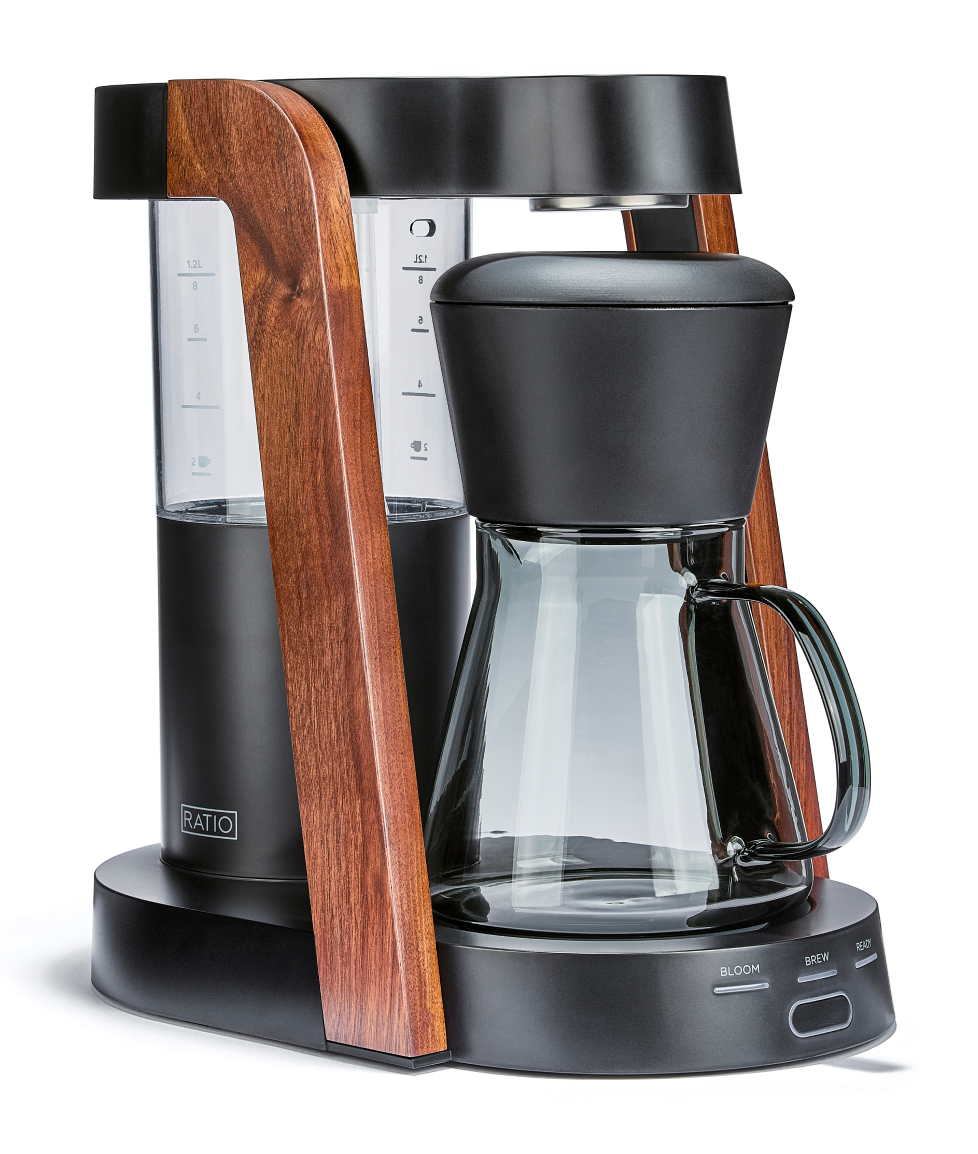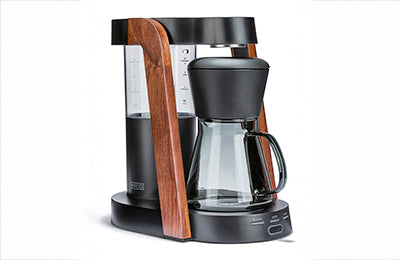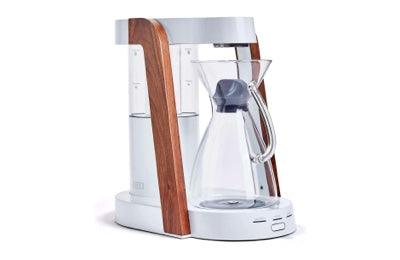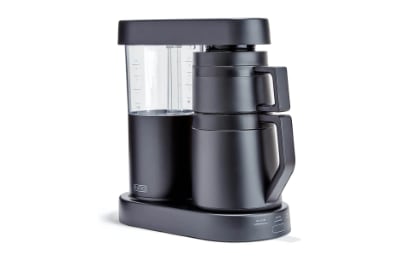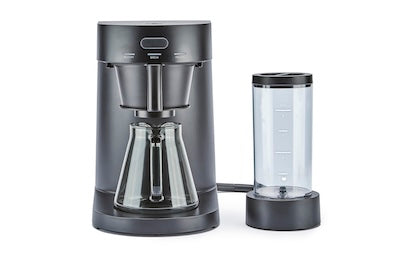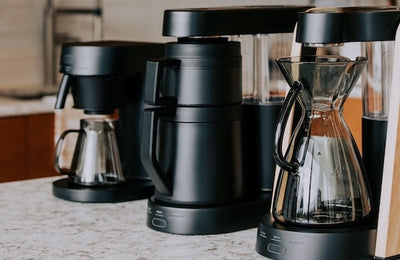East One's Selina Ullrich on How to Challenge Your Senses
Talking with Selina Ullrich, the director of coffee at East One Coffee Roasters, is an inspiration and lesson in following your intuitions and taste buds. In our discussion Ullrich shares how following her desire to learn how to roast, despite lack of experience, led her to build a program that brings in coffees that excite and challenge rather than compromise, and trains baristas to approach brewing with a “palate first” mentality. We loved chatting with her about all of this, plus how her backgrounds in ballet and endurance running help push her to continuously “do hard things” and improve on the innovative cafe programs she has created.

Can you tell us more about how you first came to the coffee industry and then to East One?
I came to coffee in college, with the intention of learning how to navigate casual social interactions, a skill which I had a great deal of room to improve on at that point in my life. Rather quickly, I developed a deep interest in coffee and saw a place for a more data driven approach in improving the consistency and quality of what we were serving in cafes. As I dove deeper into this interest, I grew further away from the approach of the company I was originally working for and left. Fortunately, I found a place to grow my knowledge and experiment with how to apply it along with a key mentor (shout out to Taylor Waugh) that really encouraged me to challenge myself and try out more ambitious approaches to service and training. After a few years building a program with my mentor I was looking for a next step and found East One in the winter of 2017. I had desperately wanted to learn about the roasting and green coffee buying side of the industry but it was exceedingly difficult to find opportunities in those areas, which to that point remained quite demographically homogeneous. East One had a roastery on site so, even though the position I originally took was on the service side, I knew no one could prevent me from, at a minimum, learning things through observation (and nosy questions!). East One initially gave me the opportunity to apply my training and development skills in a new environment, aiming to set a consistent, high standard for beverage preparation and coffee knowledge amongst our team. Shortly after opening, our original coffee director left and Tom and Morten believed that I could develop the skill set to take over, despite my lack of experience in buying and roasting. I don’t know why they believed I could do it but I am tremendously grateful that they did!
You have a background in ballet, and compete in ironman and marathon events! How do these types of activities help inform how you approach coffee, and how you taught yourself to roast in 2017?
Ballet and endurance sports have helped me to develop a strong orientation toward continuous progress as well as a kind of resilience that has allowed me to walk through the endless challenges of helping to build something up from an idea to everyday execution. The culture of ballet in particular is very much ‘no such thing as good enough’ – there will always be notes, feedback, and ways to improve. You will never be done developing and growing into a better version of yourself. With endurance sport, you have endless opportunities to A/B test inputs and see how they influence the outcome, which is ultimately measurable and objective. These pursuits have accustomed me to receiving constructive feedback about my work and iterating my approach which has been invaluable as I endeavor to continuously improve our roasting and sourcing as well as training and developing the team. There is a degree to which, if you want to do something hard you have to be willing to lay yourself out, to ache with the wanting and drive towards the outcome you desire even when it hurts. Endurance sports and ballet are certainly ways to practice that skill.

What were your parameters when it first came to crafting the coffee buying program at East One?
When I was developing our coffee buying program I was completely new to buying green coffee, though I had some experience participating in cupping samples for purchase. At first, I was conservative. I bought easy drinking Latins and washed Ethiopia – every new coffee brought in was a tremendous challenge to roast and I couldn’t imagine bringing on nicer coffees that I might not be able to roast in a way that felt respectful to them. I knew that I wanted to have a menu of interesting, beautiful coffee but I didn’t know the way there. The turning point was being invited to a cupping by Nordic Approach (a high caliber importer which works primarily in Europe but was venturing into the US market at the time) and tasting a coffee that I just knew we had to have. It was a natural unlike any other I had experienced – incredibly complex, laced with gentle spice and totally clear of the blueberry haziness of the vast majority of Ethiopia naturals available on the main US market at that time. That coffee set the path. I contracted it and figured out the rest (how to make the price work, how to roast it!) later.
"Exceptional coffee doesn’t come from condescension, it comes from respect."
It was a moment of just pure belief and it was the foundation of the strategy I eventually developed: a full menu of coffees that each speak with a different voice, creating a menu where the variety lies within the inherent character of the coffees. We buy and market the coffees in as ethical and anti-colonial a manner as possible, that means working with importers we trust and paying the prices asked. Thinking of producers as fellow business owners (which they are!) and not charities, or in any way less capable and competent businesspeople than ourselves. Exceptional coffee doesn’t come from condescension, it comes from respect.

We love what you have to say about not serving "compromise coffee" at East One's cafes! Would you mind sharing with our readers more about what you mean by this, what types of coffee you like to bring in, and how you engage with your customers about coffee that might seem unfamiliar to them at first?
To me ‘compromise coffee’ is that coffee you have on your menu that you and your team don’t particularly like or want to serve but feel you need to serve because you feel your customers are not ready to drink the coffees you like and drink. These are the coffees that people feel obligated to have on the menu because they are afraid that the menu will seem ‘not approachable’ otherwise. I believe strongly that approachability can be achieved through service style and simply believing that your customers might actually be interested in the coffee that you are interested in, if you just serve it to them and don’t give them a bunch of extraneous information or warnings (“this one is going to be pretty bright/fruity so…/’this one is a light roast so if you don’t like it…”) about it before they just try it. Just serve the coffee you think people might like if they would just give it a chance, just serve the coffee you like. As it turns out, you can serve light roasted, natural processed Kenyas as espresso! You can put it in lattes, and it is fine (delicious in fact!). You can have a delicate washed Ethiopia on drip as the only option. Just extract it properly so that milk people still get the feeling. Lots of our customers come in and order a “medium dark roast” every day but are perfectly happy with what they receive and there is really little point in ‘correcting’ them. We have people pushing their strollers in to find out when the natural and washed Nyeris are coming on the menu – it’s amazing. Just give people space to try things, and you might be surprised what happens next.
We'd love to know more about your "palate first" training process with baristas. What does this look like, and how do you help your baristas use instinct and tasting to continue developing their palates even after training is through?
Our training starts with a lot of tasting espresso for the characteristics of over, under and ideal extraction; learning to use a common vocabulary to describe the coffee and correctly place coffee on the spectrum of extraction. We then begin working on understanding what factors in brewing influence extraction and how to manipulate variables to achieve an ideal extraction for a particular coffee. Basically, asking ‘what do you taste?’ and then ‘what do we do?’. Once people are able to accurately identify extraction characteristics and make reasonable choices about how to solve for under/over extraction we then move more into the part of training that is ‘doing things with our hands’, mechanics and workflow. Typically, I know we are ready to move forward when people start asking good questions. I am always very clear with people that I don’t think of training as an instance but a process that continues indefinitely. In different ways, I am in training, our most senior barista is in training, we are all in training. There is no end to the process of improving our sensory skills, making our mechanics more consistent and precise and developing our communication and service strategy.
"I am always very clear with people that I don’t think of training as an instance but a process that continues indefinitely. In different ways, I am in training, our most senior barista is in training, we are all in training. There is no end to the process of improving our sensory skills, making our mechanics more consistent and precise and developing our communication and service strategy."
To reinforce this I like to spend time behind the bar, getting an espresso, asking for the specs the barista is using, and most importantly, how they got there that day. Usually I ask “what are your specs?” “how do you feel about it?” “what else did you try today?” and then I will give feedback about the espresso or any mechanical/workflow things I happen to see that could be fine-tuned. The best thing ever is that this process tends to produce baristas that try things I wouldn’t have thought of and teach me things –like that you can pull espresso for 90+ seconds and it is often fully mind-exploiting (depending on the coffee, of course).

Who makes up the East One team at the Carroll Gardens and Chelsea locations? What do each of the cafes offer?
Both cafes have a team of great baristas that bring a high level of engagement and focus to their work. The Carroll Gardens location has a full restaurant as well as a café, so we also have a team of servers (that find themselves getting rather acquainted with the intimate details of specialty coffee) as well as a tremendously good kitchen and back of house team. I am profoundly grateful for the work of every single person on the East One team for enabling us to bring this vision of coffee to the community.
Both cafes offer a rotating selection from our entirely single origin menu for brewed coffee, as well as for espresso. We also offer a range of seasonal drinks and preparations intended to broaden the scope of people who think of this kind of coffee as ‘for them’, such as our Campo Hermoso anaerobic flash brew iced coffee that showcases the sparkly, bright treat that experimental process coffee can be.

If you closed your eyes and envisioned the future of the coffee industry in 5 years, what do you hope to see?
I hope to see coffee embracing differentiation. Café menus, training styles, roasting styles, buying strategies, everything. I think we have a fear-based ecosystem in the industry that strongly reinforces homogeneity and disincentivizes creative, forward thinking programs from emerging onto the scene. It would truly serve us to acknowledge that not every program is actually aiming to serve the highest scoring coffees or dial into every detail because they are prioritizing something else and that is totally fine! Sweetgreen is not out there saying it’s fine dining, but it is owning its role in their customers lives and executing on its intention, which is my personal definition of success in any kind of creative or subjectively evaluated endeavor.
"Specialty coffee is for everyone in one way or another, but it is okay if any one café or roastery does not suit any one individual’s taste. In order to progress we need to acknowledge that you cannot be all things to all people and trying to please everyone is the best way I can think of to please no one."
A great many cafes are intended to be more of a community space that serves good coffee and not quality-driven temples to the platonic ideal of great coffee. Those spaces should exist but also, those spaces that are aiming to serve ideally extracted coffee in the most deliberate manner possible should exist. As it stands, we are not being honest with our customers or with ourselves about what our intentions are and that is setting us up to fail ourselves and our customers. Specialty coffee is for everyone in one way or another, but it is okay if any one café or roastery does not suit any one individual’s taste. In order to progress we need to acknowledge that you cannot be all things to all people and trying to please everyone is the best way I can think of to please no one.

Last but not least! What is your morning coffee routine like?
I drink the vast majority of my coffee in the course of my work, but I do make a little cup (8oz or so) just as I wake up, while I get dressed to run through the city and over the bridge to the roastery. I try not to drink our coffee at home – I want to see what other roasters are up to. Typically I make an aeropress or a v60, taking the week I have a particular coffee to play and try and find its best expression. I have a Baratza grinder that I found at a Goodwill and refurbished into a pretty cool guy. It isn’t perfect in any way, but it is peaceful and that is the only time in the day that I can drink coffee that way.
Website: eastonecoffee.com
Instagram: eastonecoffee
Photos: Shawn Bruce
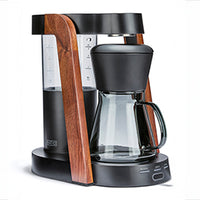 Ratio Eight S2
Ratio Eight S2
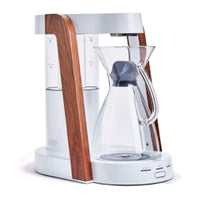 Ratio Eight Original
Ratio Eight Original
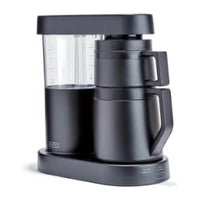 Ratio Six
Ratio Six
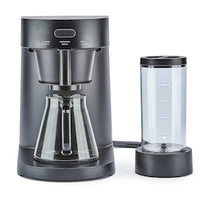 Ratio Four
Ratio Four
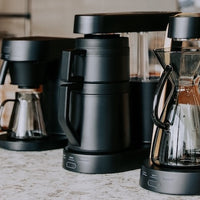 Compare Machines
Compare Machines
